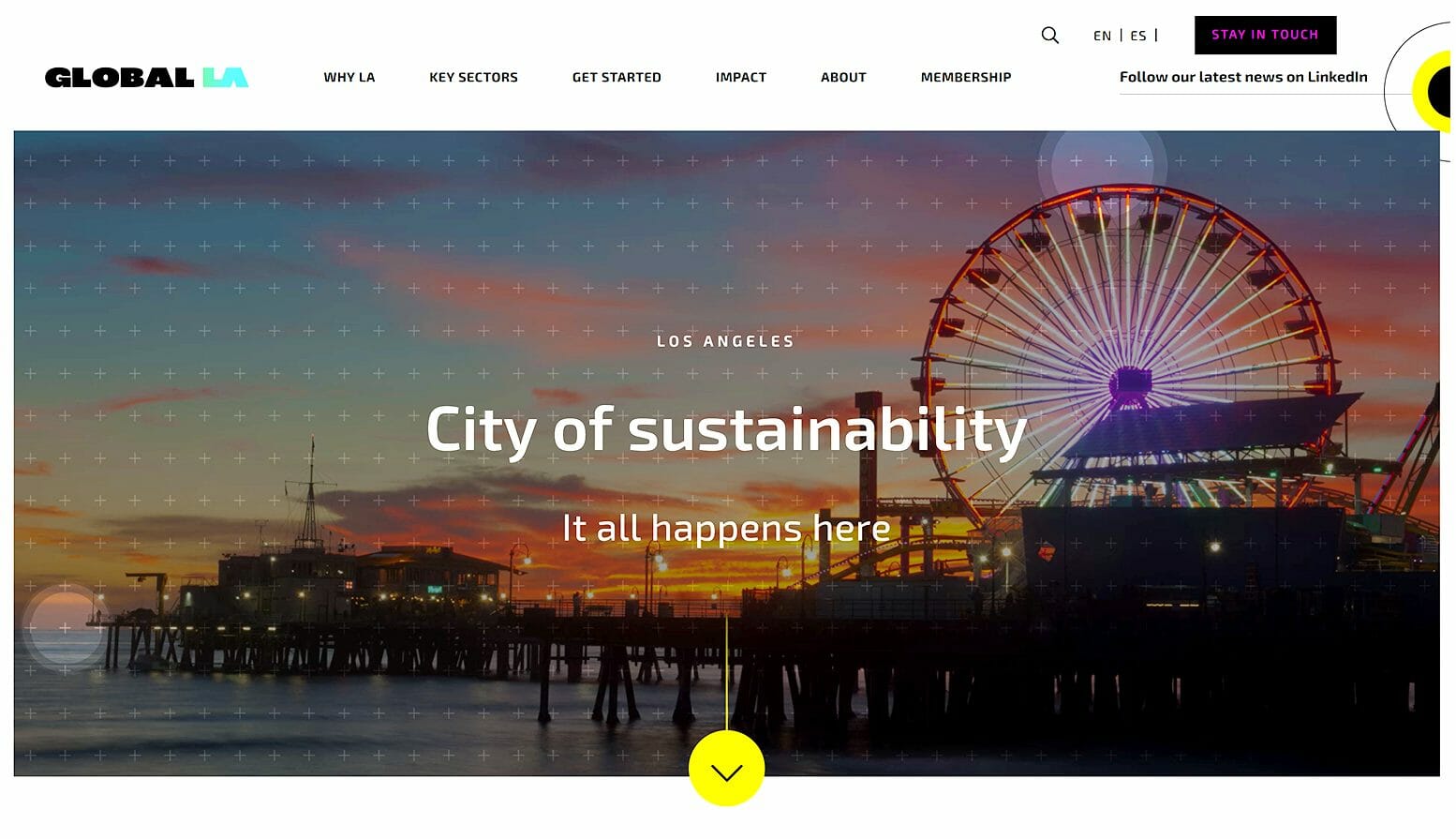30 Apr ‘19
6 Website Design Tips for Small Businesses
30 Apr ‘19
In: Web Design & Development, / By: Ripe Media
Imagine walking into a store with bad lighting, cluttered aisles, and no clear signs telling you where to go. Chances are, you wouldn’t stick around. Now, imagine that store as a website. According to Forbes, most users will leave a site in seconds if the design doesn’t immediately appeal to them. And in a world where first impressions happen at the speed of a click, a poorly designed website isn’t just a bad look—it can mean lost business.
The good news is you don’t need to be a master web designer to get this right. A few smart website design tips can make all the difference in keeping visitors engaged, interested, and more likely to become customers.
Key Takeaways: Website Design Tips for Small Businesses
- A well-designed website builds trust and encourages visitors to take action.
- Keep your design clean and simple to improve usability and engagement.
- Optimize for mobile to ensure a seamless experience across all devices.
- Use clear calls to action (CTAs) to guide users toward conversions.
- Prioritize fast loading times to reduce bounce rates and improve SEO.
- Regularly update and maintain your site to keep it secure and relevant.
Keep reading to discover the essential elements of web design that shape an engaging, user-friendly experience—one that keeps visitors clicking instead of bouncing.
How to Apply the Best Website Design Tips for Small Business Success
Before diving into the nuts and bolts of web design, it’s crucial to lay a solid foundation. A great website isn’t just about aesthetics—it’s about strategy.
Start by defining three key factors: Who your audience is, what your website needs to achieve, and how SEO strategies can help get you there. With these essentials in place, the following website design tips will be far more effective in creating a site that not only looks great but also delivers real results.
1. Design with Emotion in Mind
Top marketers understand a fundamental truth: people don’t just buy products—they buy emotions. From the moment someone lands on your website, they should feel something. Excitement, trust, calm—whatever aligns with your brand and what you offer.
The key to evoking emotion lies in your visuals, copy, and overall design. But be strategic—while videos and animations can enhance storytelling, they can also slow down your site if not optimized properly.
Start by identifying the core emotion tied to your brand. What problem does your product or service solve, and how should visitors feel when they engage with your site? A yoga studio, for example, should radiate tranquility, using serene imagery, soft colors, and minimalist design. A tech startup might inspire innovation with bold visuals and dynamic typography.
Every element on your site—down to the smallest detail—should reinforce the emotion that turns casual visitors into loyal customers.
2. Craft a Clear Story
Whether you’re a bold, quirky startup or an established company built on a singular vision, your brand story should be clear, compelling, and woven throughout your entire website.
Most businesses have an “About Us” page, but your story shouldn’t be confined to a single section. It should be reflected in your messaging, imagery, and even the way you present your products or services.
For example, if your financial services business was born out of personal financial struggles, consider incorporating educational resources or personal anecdotes that reinforce your mission. Visitors should walk away not just understanding what you do, but why it matters. Your story isn’t just a backdrop—it’s what makes your brand unique and memorable.
3. Guide Visitors with Easy Navigation
One common mistake in web design is prioritizing aesthetics over usability. Yes, a beautiful website makes a strong first impression, but if visitors can’t find what they’re looking for, they’ll leave just as quickly.
Think like your customer: Where would they expect to find key information? Pricing, store hours, contact details—these should all be easily accessible with clear, well-placed links. Every second a visitor spends hunting for information increases the likelihood they’ll give up and go elsewhere.
The navigation of the website should guide visitors toward what matters most to your business. If you have a new product or service, strategically place links to it throughout your site. Want more newsletter sign-ups? Make the opt-in process seamless and obvious.
Good navigation isn’t just about helping visitors—it’s about shaping their journey in a way that benefits both them and your business.
4. Ensure Your Design is Accessible to Everyone
A great website isn’t just visually appealing—it’s usable by everyone, including those with disabilities. Accessibility isn’t an afterthought; it’s a fundamental part of modern web design.
If your site includes interactive features—like an online tool, booking system, or e-commerce store—make sure they’re intuitive and easy to navigate. Customers should be able to find key details, like size options, pricing, and checkout buttons, without frustration.
A good rule of thumb is that if your website needs a “How to Navigate” guide, it’s already too complicated. Instead, follow best practices for accessibility: clear labels, high-contrast text, keyboard-friendly navigation, and screen reader compatibility. Designing for inclusivity doesn’t just improve the experience—it ensures that all users, regardless of ability, can engage with your site seamlessly.
5. Prioritize Visual Flow—Where the Eyes Go First
Ever notice how stores place some of their best-selling items just to the right as you walk in? That’s no accident. Studies show that people tend to scan from right to left, a subtle yet powerful cue that guides their choices. The same psychology applies to web design—where you direct attention can shape user behavior in meaningful ways.
You don’t need complex eye-tracking studies to get this right. Simple adjustments—like using bold colors to highlight key sections or strategically placing important content—can make all the difference. Want visitors to notice a special offer or key message? Frame it with contrast, position it prominently, and let their natural instincts do the rest. Even a well-designed homepage slider can serve as a visual cue, ensuring the most important elements capture attention the moment visitors land on your site.
6. Optimize for a Seamless Mobile Experience
There was a time when having a mobile-friendly website was a nice bonus. Now, it’s non-negotiable. With most visitors browsing from their phones—and Google actively penalizing sites that aren’t mobile-friendly—ignoring mobile optimization isn’t just bad for users, it’s bad for business.
A poorly designed mobile site can tank your search rankings and drive visitors away before they even have a chance to engage. The good news? Most website builders offer mobile previews, giving you a quick look at how your site might appear on smaller screens. But here’s the catch—these previews aren’t always accurate. Screen sizes, resolutions, and real-world usability vary, so always test your site on an actual phone or tablet before making changes live. A seamless mobile experience isn’t just about resizing elements—it’s about making sure your visitors can navigate, read, and interact without frustration.
Bonus Tip #7: Get Expert Help When You Need It
Knowing the right website design tips is a great start, but sometimes, a little extra expertise can make all the difference. A well-designed website isn’t just about looking good—it’s about making an impact, driving engagement, and converting visitors into customers.
If you’re ready to create a website that truly stands out but could use some professional guidance, contact us today. Let’s bring your vision to life with a design that not only looks great but works seamlessly for your business.
Frequently Asked Questions (FAQ) About Website Design Tips
1. Why is website design important for small businesses?
A well-structured, visually appealing website builds credibility, improves user experience, and helps convert visitors into customers.
2. What are the key elements of effective website design?
Key elements include a clean layout, mobile-friendly design, intuitive navigation, fast loading speeds, and strong calls to action.
3. How can I make my small business website more user-friendly?
Focus on simplicity, use easy-to-read fonts, ensure mobile responsiveness, and organize content with clear headings and white space.
4. What are some common website design mistakes to avoid?
Avoid cluttered layouts, slow load times, confusing navigation, and neglecting mobile optimization.
5. How does website design impact SEO?
Good website design enhances SEO by improving site speed, mobile responsiveness, and user engagement—factors that search engines prioritize.
6. How often should I update my website design?
Regular updates help maintain security, improve functionality, and keep your content relevant. A full redesign may be needed every 3-5 years.
















